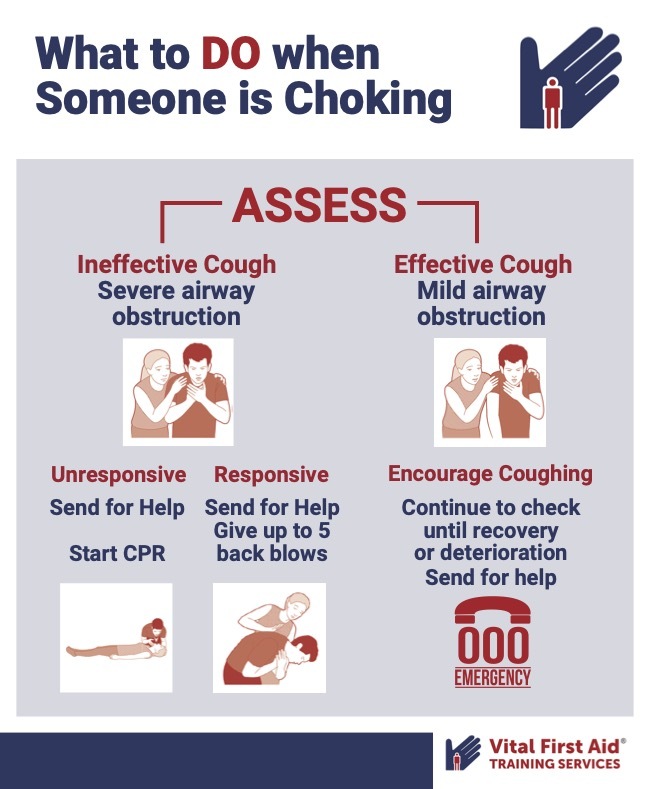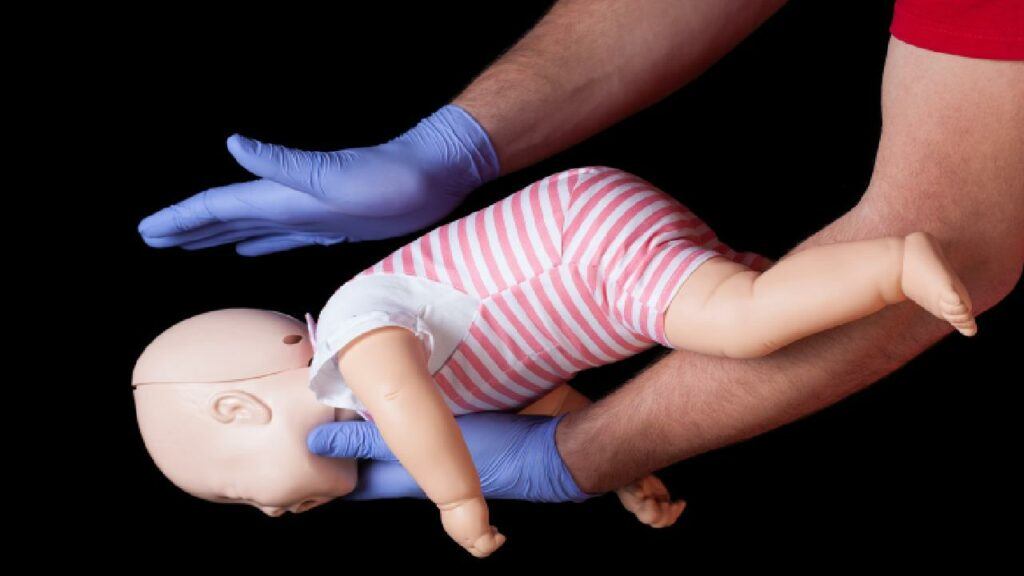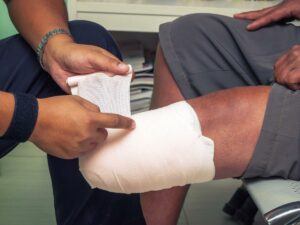Quick facts:
- Choking represents 9% of injury deaths and 0.3% of injury hospitalisations.
- The most common cause of death from choking is due to choking on objects.
- Elderly individuals face the highest choking-related mortality, whereas young children have the highest hospitalisation rates for this issue.
- Hospitalisation from choking is highest in elderly people with 33% of individuals 65 and older and 23% of children aged 0-4.
For immediate first aid treatment for choking, follow these steps:
- Check for ineffective cough.
- If unresponsive, call for help.
- In the case of severe airway obstruction, start CPR.
- Give up to 5 back blows.
- Encourage coughing.
- Keep checking for recovery or deterioration.
- If it’s a mild airway obstruction or there’s an effective cough, seek help.
Read on to learn more about Choking, and how to prevent and manage it.
Explore this blog:
What is Choking?
Signs of Choking
Causes of Choking
First Aid Response for Asphyxiation by Choking
What Not To Do When Someone Is Choking
Differences in First Aid for Choking Between Children and Adults
Many of us may have experienced or witnessed choking and know how alarming it can be. Choking occurs when the airway is blocked by an object, food, or fluid. This prevents oxygen from getting to the lungs, and if not addressed quickly can lead to unconsciousness, and in severe cases, brain damage or death.
With how common choking is, it’s important to know the steps of first aid for choking so that you can help in an emergency.
What is Choking?
Choking occurs when an airway becomes partially or wholly blocked by a foreign object – such as food – and breathing becomes difficult.
This airway is called the trachea (also referred to as the windpipe), and sits in front of the oesophagus. Your oesophagus is responsible for transferring food to your stomach.
Naturally, having your windpipe and food pipe so close together sounds counterintuitive, but there are a few key advantages with this layout, primarily relating to better verbal communication functions.
The reason food (or other objects) usually don’t block your airway, is thanks to the epiglottis – an elastic cartilage “flap” that shuts to prevent food from entering the trachea. When this mechanism fails, your windpipe is then exposed to food, and thus choking can result.
Signs of Choking
The familiar sign to alert of choking is clutching the hands to the throat. Of course, this may not always be the case, especially in young children. Common warning signs of choking include:
- Noisy breathing/difficulty breathing
- Panicked behaviour
- Unable to talk
- Skin becomes flushed then turns pale or bluish
- Lips, skin, and nails turn grey or blue
- Squeaky/wheezing sounds while attempting to breathe
- Watery eyes
- Red face
- Losing consciousness
- Coughing – forceful or weak
Causes of Choking
Choking in young children is often as a result of swallowing small objects, be it food or items such as beads or buttons, while for adults, it’s usually from a piece of food. It’s important that children are always supervised when they are eating.
Food is the most prevalent cause of choking, with research from USA and Canada suggesting grapes, sweets, and hotdogs are the most common causes of choking related deaths.
Other common choking hazards include liquids, coins, toys, magnets, buttons, and batteries.
First Aid Response for Asphyxiation by Choking
Choking cuts off oxygen to the brain, and the brain can only survive a few minutes without oxygen, so it’s crucial to give first aid as soon as possible.
Call 000 immediately for an emergency or if the foreign object cannot be easily removed.
Emergency services receive many calls for choking emergencies, and thankfully, first aid provided immediately and correctly can save the life of someone who is choking.
There are varied first aid responses for choking, which may be dependent on:
- If the person is conscious or unconscious
- Whether the person is a child or an adult
- If you are performing first aid on yourself or another person.
Conscious person
- Offer reassurance and encourage them to breathe and cough
- Call 000
- If they do not have an effective cough lean then slightly forward and, with the heel of your hand, deliver back blows between the shoulder blades. After each blow, check if the object has removed itself
Unconscious not-breathing normally person
- Call 000
- Remove any visible obstruction from their mouth
- Commence CPR.
Yourself
- Attempt to stay calm and, if possible, attract someone’s attention for assistance
- Cough forcefully if you can
- Lean forward as far as you can, holding onto something anchored if possible. Breathe out, then take a deep breath in and cough to try and remove the object.

What Not To Do When Someone Is Choking
Some important things to avoid when providing first aid for choking victims are:
- DON’T place your fingers in their mouth
- DON’T pick up a child/infant who is choking and turn them upside down
- DON’T perform mouth-to-mouth
- DON’T slap the person on the back when upright
- DON’T attempt the Heimlich manoeuvre
Differences in First Aid for Choking Between Children and Adults
Choking is most common in the elderly and infants. As noted above, first aid for adults includes the person leaning forward while delivering back blows and chest thrusts. Use less force on a child than you would on an adult.
For children, don’t pat or slap a choking child on the back if they are managing to cough, as this may dislodge the object and cause it to be inhaled deeper into the airway.
In young children, struggling to breathe may not last long and ceasing panicked activity may signal an emergency situation rather than indicate the object has been dislodged. In children, check for other signs that the child is in shock, such as cold and clammy skin, a pale face, and their responses.
If a baby is choking, place them on your forearm or lap, hold them firmly, their head lower than their body, and use less force than you would on a child.
Learn First Aid For Choking With Vital First Aid
At Vital First Aid, we believe it’s essential that everyone has the knowledge and skills to confidently apply first aid and respond to a medical emergency until professional medical assistance is available.
Our qualified first aid trainers are highly skilled and experienced, and all students receive a First Aid Certificate on completion. To benefit from our range of first aid courses, view our courses.






